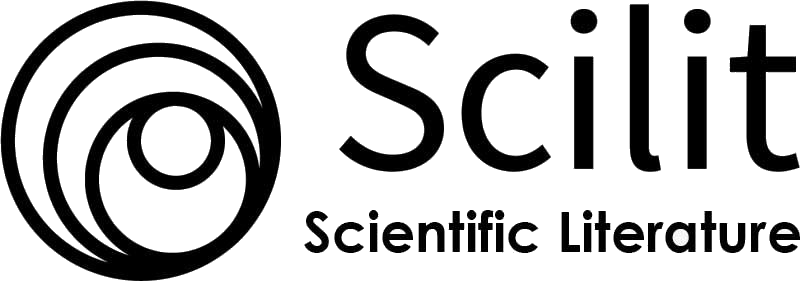Effect of Innovative Human Resource Management Strategies on Employee Retention: A Systematic Review of Literature
DOI:
https://doi.org/10.58425/ijeib.v3i1.370Keywords:
Innovative, human resource management, strategies, employee, retentionAbstract
Aim: A systematic review of the effect of innovative human resource management strategies on employee retention
Methods: This study employed a systematic review approach. Multiple bibliographic databases, including Google Scholar, Semantic Scholar, ResearchGate, Sage, JSTOR, ScienceDirect, Emerald Insight, and Elsevier were systematically searched. Titles, abstracts, and keywords related to innovative human resource management strategies and employee retention were screened. Search terms included innovative human resource, management strategies, employee retention, workforce engagement, employee turnover, and human capital.
Results: Innovative human resource approaches such as flexible working circumstances, digital tools, green efforts, and continual employee development can boost job satisfaction and loyalty, which in turn reduces turnover. Strategic and innovative HRM practices such as training, rewards, flexible work, and clear career paths are key to employee retention by improving satisfaction and commitment. Adapting these strategies to meet the needs of groups like Generation Z, who prioritize technology and autonomy, is increasingly important. Additionally, green HRM and strong workplace relationships foster a positive culture that further supports retention.
Conclusion: Combining traditional methods with green initiatives, digital tools, and personalized development helps deepen loyalty and reduce turnover. However, retention is complex and shaped by factors like culture and workforce diversity, so ongoing research is needed to adapt these strategies effectively.
Recommendations: Organizations should combine innovative and traditional HRM practices, focusing on continuous learning, flexible work, green initiatives, and tailoring strategies to younger employees who value technology and autonomy.
References
Agustian, K., Pohan, A., Zen, A., Wiwin, W., & Malik, A. J. (2023). Human resource management strategies in achieving competitive advantage in business administration. Journal of Contemporary Administration and Management (ADMAN), 1(2), 108-117. https://doi.org/10.61100/adman.v1i2.53
Ahmed, M. A. (2023). Innovations in Human Resource Management: A Contemporary Perspective. Journal of Management & Social Science, 1(1), 16-24. https://doi.org/10.63075/jmss.v1i1.3
Ali, M. M. (2019). The strategic role of human resources planning to achieve sustainable competitive advantage. Електронно списание» Диалог «, (02), 1-13. https://www.ceeol.com/search/article-detail?id=779478
Atalya, N. A., & Genga, P. A. (2019). Human resource management practices and retention of employees in Machakos County, Kenya. International Journal of Current Aspects, 3, 235-250.
Barney, J. (1991). Firm resources and sustained competitive advantage. Journal of Management, 17(1), 99-120. https://doi.org/10.1177/014920639101700108
Boxall, P., & Purcell, J. (2003). Strategy and Human Resource Management. http://digitalcommons.ilr.cornell.edu/ilrreview/vol57/iss1/84
Cachón-Rodríguez, G., Blanco-González, A., Prado-Román, C., & Del-Castillo-Feito, C. (2022). How sustainable human resources management helps in the evaluation and planning of employee loyalty and retention: Can social capital make a difference? Evaluation and program planning, 95, 102171. https://doi.org/10.1016/j.evalprogplan.2022.102171
Crook, T. R., Ketchen Jr, D. J., Combs, J. G., & Todd, S. Y. (2008). Strategic resources and performance: a meta‐analysis. Strategic Management Journal, 29(11), 1141-1154. https://doi.org/10.1002/smj.703
Ewen, R. B. (1964). Some determinants of job satisfaction: A study of the generality of Herzberg's theory. Journal of applied psychology, 48(3), 161. https://psycnet.apa.org/doi/10.1037/h0048383
Fahim, M. G. A. (2018). Strategic human resource management and public employee retention. Review of Economics and Political Science, 3(2), 20-39. https://doi.org/10.1108/REPS-07-2018-002
Gilchrist-Saunders, K. (2024). Strategies Small Business Leaders Use to Retain Employees to Reduce Turnover Costs (Doctoral dissertation, Walden University). https://search.proquest.com/openview/8a7a462562d9ceca50931a2a0362d679/1?pq-origsite=gscholar&cbl=18750&diss=y
Hackman, J. R., & Oldham, G. R. (1976). Motivation through the design of work: Test of a theory. Organizational behavior and human performance, 16(2), 250-279. https://doi.org/10.1016/0030-5073(76)90016-7
Hamadamin, H. H., & Atan, T. (2019). The impact of strategic human resource management practices on competitive advantage sustainability: The mediation of human capital development and employee commitment. Sustainability, 11(20), 5782. https://doi.org/10.3390/su11205782
Hassanein, F., Daouk, A., Yassine, D., Bou Zakhem, N., Elsayed, R., & Saleh, A. (2024). Green Human Resource Management and Employee Retention in the Hotel Industry of UAE: The Mediating Effect of Green Innovation. Sustainability, 16(11), 4668. https://doi.org/10.3390/su16114668
Herzberg, F. (1965). The motivation to work among Finnish supervisors. Personnel psychology, 18(4). https://search.ebscohost.com/login.aspx?direct=true&profile=ehost&scope=site&authtype=crawler&jrnl=00315826&AN=6264852&h=VIp6cdHAdgxj6%2FvtqndtaSCxAyr43d3RV7jwQSz0arS%2B2ALa1vOdjAGHxq5pdCF2K3A%2FstGYUW5PiyDBaFpjUA%3D%3D&crl=c
House, R. J., & Wigdor, L. A. (1967). Herzberg's dual-factor theory of job satisfaction and motivation: A review of the evidence and criticism. Personnel Psychology, 20(4). https://www.academia.edu/download/40251552/House_Wigdor.pdf
Kamalaveni, M., Ramesh, S., & Vetrivel, T. (2019). A review of literature on employee retention. International Journal of Innovative Research in Management Studies (IJIRMS), 4(4), 1-10. https://www.researchgate.net/profile/Kamalaveni-Ms/publication/335677274_A_REVIEW_OF_LITERATURE_ON_EMPLOYEE_RETENTION/links/5e0f1cc0299bf10bc38c9e37/A-REVIEW-OF-LITERATURE-ON-EMPLOYEE-RETENTION.pdf
Kareska, K. (2023). Human resource management strategies for achieving competitive advantage of organizations. Strategy Models for Firm Performance Enhancement eJournal, 15(20). https://eprints.uklo.edu.mk/id/eprint/10089
Kess-Momoh, A. J., Tula, S. T., Bello, B. G., Omotoye, G. B., & Daraojimba, A. I. (2024). Strategic human resource management in the 21st century: A review of trends and innovations. World Journal of Advanced Research and Reviews, 21(1), 746-757. https://doi.org/10.30574/wjarr.2024.21.1.0105
Lin, Z., Gu, H., Gillani, K. Z., & Fahlevi, M. (2024). Impact of Green Work-Life Balance and Green Human Resource Management Practices on Corporate Sustainability Performance and Employee Retention: Mediation of Green Innovation and Organisational Culture. Sustainability, 16(15), 6621. https://doi.org/10.3390/su16156621
Maureen, M., Eunice, K., & Douglas, O. (2020). Influence of Human Resources Management Strategies on Employee Retention in the Medical Insurance Industry, In Kenya. International Journal of Social Sciences Management and Entrepreneurship (IJSSME), 4(1). https://sagepublishers.com/index.php/ijssme/article/view/77
Mbugua, G. M. (2015). Relationship between strategic human resource management practices and employee retention in commercial banks in Kenya (Doctoral dissertation). http://hdl.handle.net/123456789/1715
Papa, A., Dezi, L., Gregori, G. L., Mueller, J., & Miglietta, N. (2020). Improving innovation performance through knowledge acquisition: the moderating role of employee retention and human resource management practices. Journal of Knowledge Management, 24(3), 589-605. https://doi.org/10.1108/JKM-09-2017-0391
Peteraf, M. A., & Barney, J. B. (2003). Unraveling the resource‐based tangle. Managerial and decision economics, 24(4), 309-323. https://doi.org/10.1002/mde.1126
Piter, C. A. E. (2023). Designing A Performance Management Strategy to Retain Employees in an IT Consulting Startup (Case Study: PLABS). https://digilib.itb.ac.id/assets/files/2023/MjAyM19UU19QUF9Dcnlzc2EgQXByaWxpYSBFcm1peWFuZHJhLTI5MTIxMzY0X0Z1bGwgVGV4dC5wZGY.pdf
Priem, R. L., & Butler, J. E. (2001). Is the resource-based “view” a useful perspective for strategic management research? Academy of Management Review, 26(1), 22-40. https://doi.org/10.5465/amr.2001.4011928
Robbins, S. P., & Judge, T. (2009). Organizational behavior. Pearson South Africa. https://books.google.com/books?hl=en&lr=&id=9-jcsiS8RSoC&oi=fnd&pg=PA1&dq=Robbins,+S.+P.,+%26+Judge,+T.+A.+(2009).+Organizational+behavior+(15th+ed.).+Pearson.&ots=0qtUFICCqk&sig=oLRUoeT07-78cAZsBx5KVmcekB8
Saraswathy, R., & Balakrishnan, J. (2017). Facets of talent retention: role of employee and employer branding as catalysts. International Journal of Business Forecasting and Marketing Intelligence, 3(4), 407-432. https://doi.org/10.1504/IJBFMI.2017.087663
Setiawan, S., Rusilowati, U., Jaya, A., & Wang, R. (2025). Transforming Human Resource Practices in the Digital Age: A Study on Workforce Resilience and Innovation. Journal of Computer Science and Technology Application, 2(1), 84-92. https://doi.org/10.33050/g0k6n560
Sharma, S., Singh, K., & Arya, V. (2021). Innovation and employee turnover in biotechnology companies: rethinking the role of strategic human resource management. World Review of Entrepreneurship, Management and Sustainable Development, 17(2-3), 291-305. https://doi.org/10.1504/WREMSD.2021.114435
Singh, D. (2019). A literature review on employee retention with a focus on recent trends. International Journal of Scientific Research in Science and Technology, 6 (1), 425, 431. https://doi.org/10.32628/IJSRST195463
Susantinah, N., & Krishernawan, I. (2023). Human resource management (HRM) strategy in improving organisational innovation. Journal of Contemporary Administration and Management (ADMAN), 1(3), 201-207. https://doi.org/10.61100/adman.v1i3.80
Tonui, B. C. (2017). Human Resource Management Practices on Employee Retention (Doctoral dissertation, University of Nairobi). https://erepository.uonbi.ac.ke/handle/11295/102596
Usman, H. M. (2025). Human Resource Management Innovation In Improving Talent Retention in the Generation Z Era. Pasundan Social Science Development, 5(2), 207-216. https://doi.org/10.56457/pascidev.v5i2.202
Wright, P. M., Dunford, B. B., & Snell, S. A. (2001). Human resources and the resource-based view of the firm. Journal of Management, 27(6), 701-721. https://doi.org/10.1177/014920630102700607
Downloads
Published
How to Cite
Issue
Section
License
Copyright (c) 2025 Emmanuel M. Kojo, Eric Osei, Barbara A. Nana

This work is licensed under a Creative Commons Attribution 4.0 International License.
The authors retain the copyright and grant this journal right of first publication. This license allows other people to freely share and adapt the work but must give appropriate credit, provide a link to the license, and indicate if changes were made. They may do so in any reasonable manner, but not in any way that suggests the licensor endorses them or their use.










